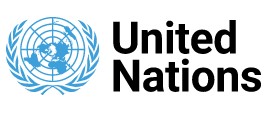Restoring Capacity
Is A Demonstration Of Respect For Everyone's Right To Live Their Own Life.
Firstly The Term Capacity Building And Capacity Development Emerged In United Nations Material In The 1990s.

Capacity-building is defined by the UN as the process of developing and strengthening the skills, instincts, abilities, processes and resources that organizations, communities and individuals need to survive, adapt, and thrive in a fast-changing world.
AN ESSENTIAL INGREDIENT IN CAPACITY-BUILDING IS TRANSFORMATION THAT IS GENERATED, AND SUSTAINED OVER TIME, FROM WITHIN.
Transformation of this kind goes beyond performing tasks to changing mindsets and attitudes.



To Dream Again

Helps Us To Live A Good Life, Across Our Whole Life

Capacity restoration empowers you to facilitate your own personal development, moving from the person whose ‘capacity is being restored’ to the ‘capacity restorer’
1 ... IT FOCUSES ON THE STRENGTH OF THE INDIVIDUAL ... Capacity restoration shifts the narrative around disability services from a deficit, needs-based model to an abundance, strength-building model. This allows disabled people, their parents and carers, as well as disability service providers to approach support with a growth mindset. Building on the strengths of people, rather than focusing on their disability, empowers people to become life-long learners.
2 ... IT'S EMPOWERING ... One of the best things about capacity restoration is that it empowers people. The aim of restoring capacity is to show people that with proper planning, execution and support, they can achieve something that they set their mind to. This shows everyone that they can have an influence over their environment and actively create their own future.
3 ... IT TEACHES PROBLEM SOLVING SKILLS ... Restoring Capacity helps the development of problem solving skills. It acknowledges people as life-long learners, who will continuously learn new skills as they encounter new challenges. People play an active role in setting their own goals, choosing the right development strategies for themselves, and reflecting on their own progress ... growing confidence as well as skills
4 ... IT PREPARES PEOPLE FOR LIVING LIFE AS A CITIZEN ... Restoring Capacity grows the skills and capabilities of people, better preparing them for real life. Focusing on developing who they are and who they want to become, restoring capacity aims to help people lead independent lives and better participate in society.
5 ... IT TAKES A HOLISTIC APPROACH TO THE PROVISION OF SERVICES ... Restoring Capacity can be approached through a variety of strategies and tactics at the individual, organisational and systemic levels that make it sustainable and effective. From teaching skills useful in home and community life, to developing vocational skills in the workplace, capacity building overcomes multi-dimensional barriers to achieving goals .
Restoring Capacity For The Individual ... Making sure I have the skills, resources and confidence I need to participate in the community and access the same kind of opportunities as other people, and live a life of my choosing

Restoring Capacity In Our Community ... Making sure providers, schools, workplaces and community spaces see disabled people as fellow citizens, can happily use the Enabling Good Lives Approach, and have the skills and confidence to play their part, as disabled people create a life that is meaningful to them.

Restoring Capacity At The Systemic Level ... Making sure the system redesign is understood, supported and is coherent with being trusting and trustworthy partners
